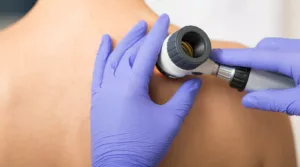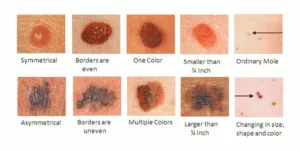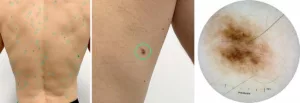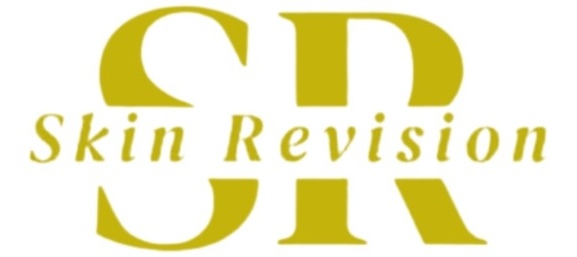Looking for an affordable and convenient location to have your Moles checked?
At Skin Revision we prioritise your skin health by offering our dermoscopic mole checking at the Beaconsfield Skin Clinic. If you have concerns about one or more moles, or are just looking for reassurances then an appointment for a mole check with us would be your convenient, fast first option.
Based in Beaconsfield and accessible to all areas of Buckinghamshire, Hertfordshire and Berkshire including Gerrards Cross, High Wycombe, Amersham, Slough, Marlow, Maidenhead, Loudwater, Rickmansworth and Cookham, we are able to successfully mole Map and medically check your Moles using Dermoscope.
Dermoscopic Mole Checking
Within your consultation and photographing, you will have your Mole check performed with an medically approved dermoscope. This is a specialised device that is equipped with high-resolution cameras and magnification capabilities, to thoroughly examine moles. This advanced technology allows us to capture detailed images of moles for a closer inspection of their characteristics.

Mole Removal for Benign Moles
For benign, non-malignant moles that require removal, our Skin Clinic provides safe and effective procedures. Jacqui Bannister MD DMK, is hugely experienced in analyising, treating and removing a broad spectrum of skin lesions including moles. The precise treatment procedure to remove any mole will vary depending on the size and age. The options to remove benign moles at the Buckinghamshire mole clinic could be VeinAway, CryoPen or “true” Plaxel Cold Plasma.

What is VeinAway?
VeinAway is a revolutionary cosmetic procedure designed to effectively target and diminish the appearance of various skin lesions, particularly spider veins, small red facial veins, small skin tags, milia and small flat moles. The technology is non-invasive and addresses these vascular imperfections.
VeinAway is an energy delivery system that utilises a specialised device that emits controlled bursts of light energy onto the affected area. This energy is absorbed by the haemoglobin in the blood vessels, causing them to coagulate and to kill off the blood supply feeding the mole. Subsequently, the body naturally reabsorbs the dead cells causing the mole to decrease in size and appearance.
What is CryoPen?
CryoPen is a medically-advanced and non-invasive treatment specifically designed to address various skin lesions, including moles. This technology utilises the power of extreme cold (minus 89 degrees Celsius) to target and eliminate unwanted lesions without the need for incisions or surgery.
The device emits a fine jet of nitrous oxide at the freezing temperature, to swiftly freeze the affected area. This freezing destroys the cells within the mole, prompting the body’s natural healing processes to remove the treated lesion gradually.
CryoPen is particularly effective for smaller and flatter moles that may be bothersome or causing discomfort. The procedure is quick, virtually painless, and requires minimal downtime, allowing you to resume daily activities promptly.
Typically, following the treatment, the mole will scab and gradually fall off, revealing smoother skin underneath over the course of a few weeks.
What is cool/ cold Plasma Pen?
True Cool / Cold Plasma Pen targets various skin lesions, including moles, across different areas of the body. This technology harnesses the power of cold plasma energy to safely and precisely remove unwanted moles without invasive surgical procedures.
When treating moles, the device emits controlled plasma energy that interacts with the skin lesion. This interaction breaks down the mole’s cells without causing damage to the surrounding healthy skin. The process is gentle, non-invasive, and typically causes minimal discomfort.
This non-surgical treatment method is versatile and can be applied to moles located on various parts of the body, including the face, ears, neck, back, chest, arms, legs, and feet without leaving scaring or blemishes to the surrounding skin.
The treated area may form a scab, which will eventually fall off, revealing smoother skin underneath. The final results can be seen over 2 or 3 weeks or sometimes considerably longer, depending on the size and age of the Mole as well as the body’s individual ability to break down the dead cells naturally after treatment.
How do Moles form?
Moles, also known as nevi, develop when melanocytes, the pigment-producing cells in the skin, grow in clusters rather than spreading out evenly. These cells give colour to the skin and are responsible for the formation of Moles. While most moles are harmless, some may undergo changes that require attention.
Importance of regular Mole checks
Regular monitoring and examination of moles are essential for several reasons:
- Detecting changes: Moles can change in size, shape, colour, or texture over time. Regular checks by yourself or us, can help in identifying any alterations, which could indicate potential issues.
- Early detection of abnormalities: Catching any irregularities early, significantly increases the chances of a successful treatment, if a mole turns out to be concerning.
- Checking Moles for Skin Cancer: Regular mole checks create awareness about your skin’s condition,allowing you to take proactive measures for your skin health.

Reducing the risk of melanoma and Skin cancer
While most moles are harmless, certain precautions can significantly reduce the risk of melanoma and skin cancer:
-
- Sun Protection: Limiting sun exposure, especially during peak hours, and using sunscreen with a high SPF helps reduce the risk of skin damage and skin cancer.
- Avoiding Tanning Beds: UV radiation from tanning beds can increase the risk of skin cancer. It’s advisable to avoid their use altogether.
- Protective Clothing: Wearing protective clothing like hats, sunglasses, and long-sleeved shirts shields the skin from harmful UV rays.
- Regular Check-ups: Periodic visits to a dermatologist for skin checks are crucial, especially for individuals with a history of sunburns, extensive sun exposure, or a family history of skin cancer.
- Self Mole Examination: Regularly examining your skin, including moles, and being vigilant about any changes or new growths ensures early detection of potential issues.

Mole Scanning and laboratory analysis
As mentioned earlier, at the Beaconsfield Mole Clinic, we offer a mole mapping or mole checking service, where we take detailed photos of moles using the dermoscope. These images are then sent to our trusted laboratory and examined by dermatologists who specialise in skin lesions and in particular moles. This comprehensive evaluation aids in accurate diagnosis and appropriate treatment planning. The treatment would be by Skin Revision if the Moles are benign or from a further dermatologist or hospital, with the Moles are thought to be possibly cancerous.
Checking Moles for Skin Cancer
At Skin Revision, your skin health and peace of mind are our priorities. Our commitment to utilising advanced technology and collaborating with our dermatologists ensures that you receive the highest standard of care for your Mole concerns.
Whether it’s a routine check, mapping, or removal of benign Moles, Jacqui Bannister, here at Skin Revision, is here to guide you through the process. We always stress the importance of regular mole checks, early detection, and sun-safe practices for maintaining healthy skin.
Mole formation is a natural occurrence, but monitoring them and staying vigilant about changes is key. Regular Mole checks, coupled with sun protection measures and proactive health practices, play a vital role in reducing the risk of melanoma and skin cancer.
Contact us today to schedule your Mole check and take proactive steps towards maintaining healthy skin – 01494 341262 – SkinRevision.uk
- American Academy of Dermatology (AAD): The AAD provides comprehensive and reliable information about skin health, including articles and resources discussing moles, their characteristics, and their association with skin cancer. They offer guidelines on mole checks, skin cancer prevention, and early detection.
- Skin Cancer Foundation: The Skin Cancer Foundation is another reputable source that offers extensive information on skin cancer, including the role of moles in skin health. They provide detailed articles, research studies, and educational resources about mole checks, mole types, and their potential link to skin cancer development.
These sources are highly regarded within the medical and dermatological communities and are known for providing evidence-based information on skin health, including the significance of Moles in relation to skin cancer.
